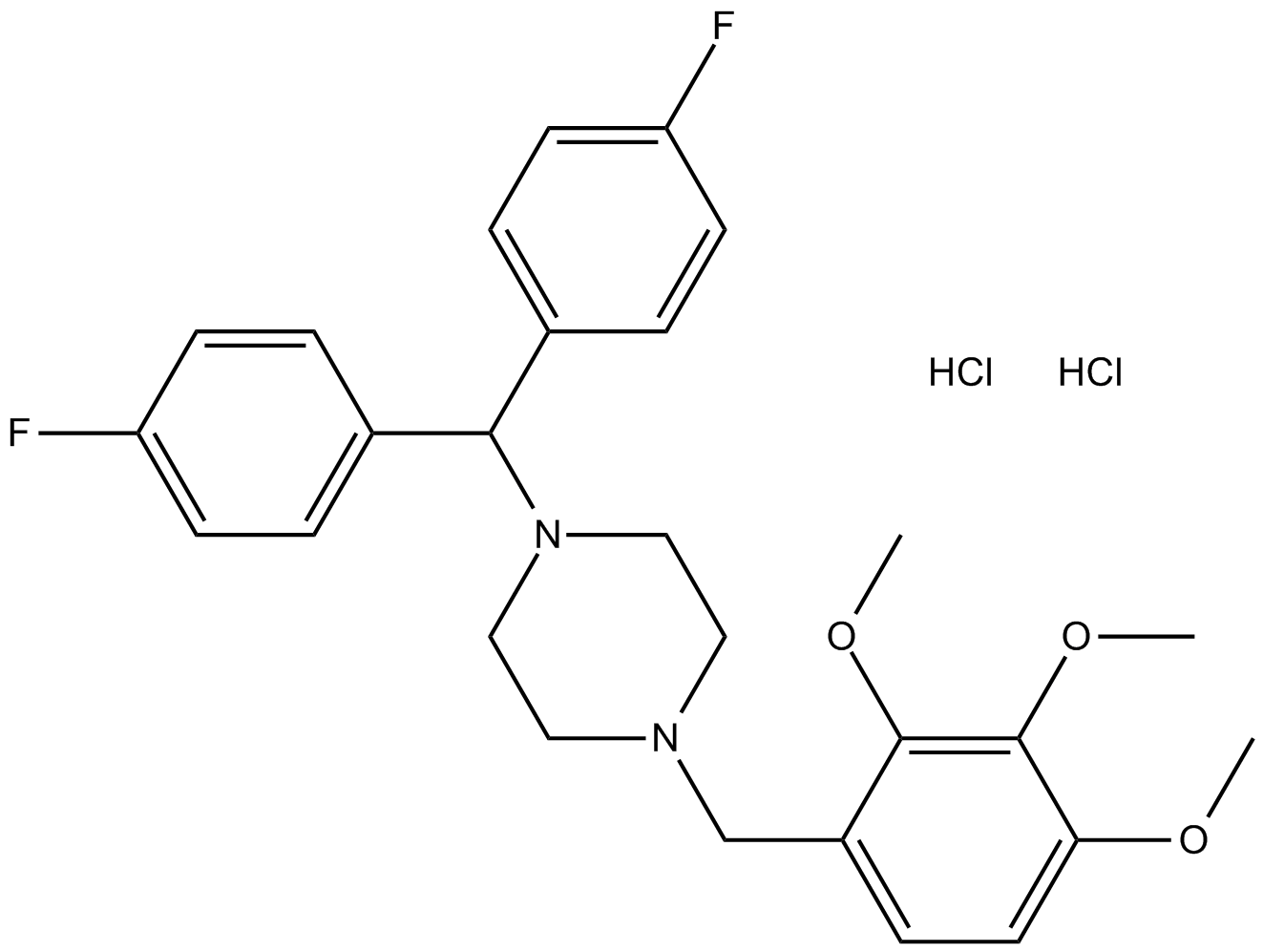
Lomerizine dihydrochloride is a relatively new L- and T-type calcium channel blocker used in the treatment of migraine.
| Cell Experiment | |
|---|---|
| Cell lines | Motor neurons |
| Preparation method | A stock solution of 100 mM lomerizine was prepared in dimethyl sulfoxide (DMSO) and aliquots were stored at −80°C. Lomerizine was further diluted to 400 μM in DMSO prior to use and further diluted in culture medium to working concentrations. |
| Concentrations | 400 μM |
| Incubation time | 3 d |
| Animal Experiment | |
|---|---|
| Animal models | Male adult C57BL/6J mice |
| Formulation | water containing 5% arabic gum |
| Dosages | 30 mg/kg |
| Administration | p.o. |
| Molecular Weight | 541.46 |
| Formula | C27H30F2N2O3.2HCl |
| CAS Number | 101477-54-7 |
| Solubility (25°C) | DMSO 40 mg/mL |
| Storage |
Powder -20°C 3 years ; 4°C 2 years In solvent -80°C 6 months ; -20°C 1 month |
| Species | Mouse | Rat | Rabbit | Guinea pig | Hamster | Dog |
| Weight (kg) | 0.02 | 0.15 | 1.8 | 0.4 | 0.08 | 10 |
| Body Surface Area (m2) | 0.007 | 0.025 | 0.15 | 0.05 | 0.02 | 0.5 |
| Km factor | 3 | 6 | 12 | 8 | 5 | 20 |
| Animal A (mg/kg) = Animal B (mg/kg) multiplied by | Animal B Km |
| Animal A Km |
For example, to modify the dose of Compound A used for a mouse (20 mg/kg) to a dose based on the BSA for a rat, multiply 20 mg/kg by the Km factor for a mouse and then divide by the Km factor for a rat. This calculation results in a rat equivalent dose for Compound A of 10 mg/kg.
| Related Calcium Channel Products |
|---|
| ω-Agatoxin TK
ω-Agatoxin TK, a peptidyl toxin of the venom of Agelenopsis aperta, is a potent and selective P/Q type Ca2+ channel blocker. |
| SNX-482
SNX-482, a peptidyl toxin of the spider Hysterocrates gigas, is a potent, high affinity, selective and voltage-dependent R-type CaV2.3 channel blocker with an IC50 of 30 nM. |
| ω-Conotoxin MVIIC
ω-Conotoxin MVIIC is a N- and P/Q-type Ca2+ channel blocker, significantly suppresses the 11-keto-βboswellic acid-mediated inhibition of glutamate release. |
| ω-Conotoxin GVIA
ω-Conotoxin GVIA is an inhibitor of the N-type Ca2+ channel. |
| ω-Conotoxin CnVIIA
ω-Conotoxin CnVIIA, a 27 amino acid neuropeptide toxin, is a N-type calcium current blocker. |


Products are for research use only. Not for human use. We do not sell to patients.
© Copyright 2010-2023 AbMole BioScience. All Rights Reserved.
